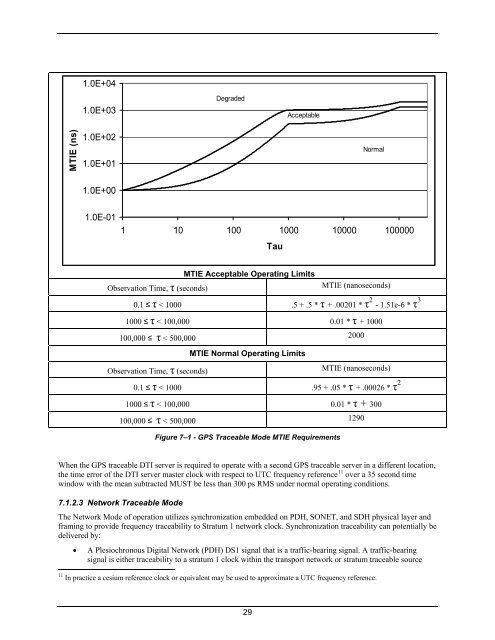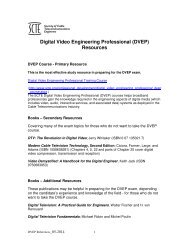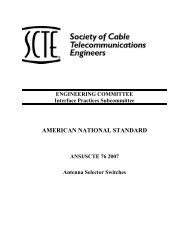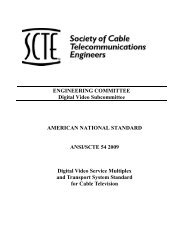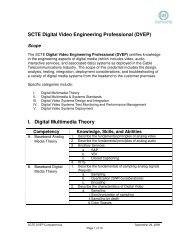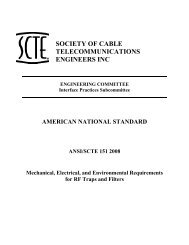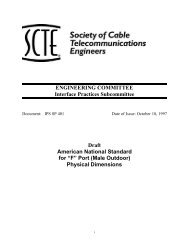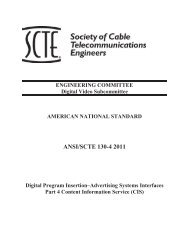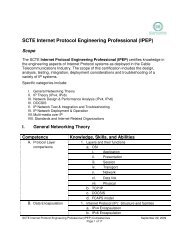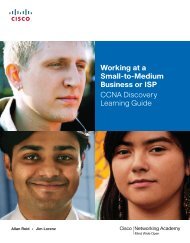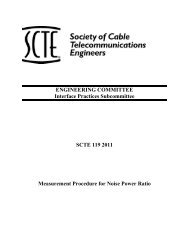ANSI_SCTE 137-1 2010.pdf
ANSI_SCTE 137-1 2010.pdf
ANSI_SCTE 137-1 2010.pdf
Create successful ePaper yourself
Turn your PDF publications into a flip-book with our unique Google optimized e-Paper software.
1.0E+041.0E+03DegradedAcceptableMTIE (ns)1.0E+021.0E+01Normal1.0E+001.0E-011 10 100 1000 10000 100000TauMTIE Acceptable Operating LimitsObservation Time, τ (seconds)MTIE (nanoseconds)0.1 ≤ τ < 1000 .5 + .5 * τ + .00201 * τ 2 - 1.51e-6 * τ 31000 ≤ τ < 100,000 0.01 * τ + 1000100,000 ≤ τ < 500,000 2000MTIE Normal Operating LimitsObservation Time, τ (seconds)MTIE (nanoseconds)0.1 ≤ τ < 1000 .95 + .05 * τ + .00026 * τ 21000 ≤ τ < 100,000 0.01 * τ + 300100,000 ≤ τ < 500,000 1290Figure 7–1 - GPS Traceable Mode MTIE RequirementsWhen the GPS traceable DTI server is required to operate with a second GPS traceable server in a different location,the time error of the DTI server master clock with respect to UTC frequency reference 11 over a 35 second timewindow with the mean subtracted MUST be less than 300 ps RMS under normal operating conditions.7.1.2.3 Network Traceable ModeThe Network Mode of operation utilizes synchronization embedded on PDH, SONET, and SDH physical layer andframing to provide frequency traceability to Stratum 1 network clock. Synchronization traceability can potentially bedelivered by:• A Plesiochronous Digital Network (PDH) DS1 signal that is a traffic-bearing signal. A traffic-bearingsignal is either traceability to a stratum 1 clock within the transport network or stratum traceable source11 In practice a cesium reference clock or equivalent may be used to approximate a UTC frequency reference.29


